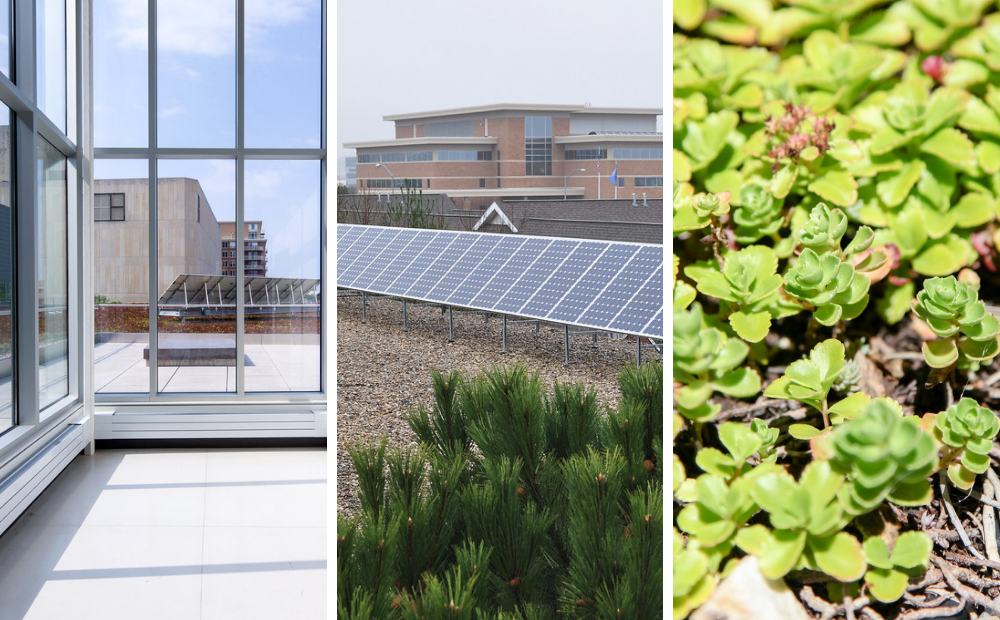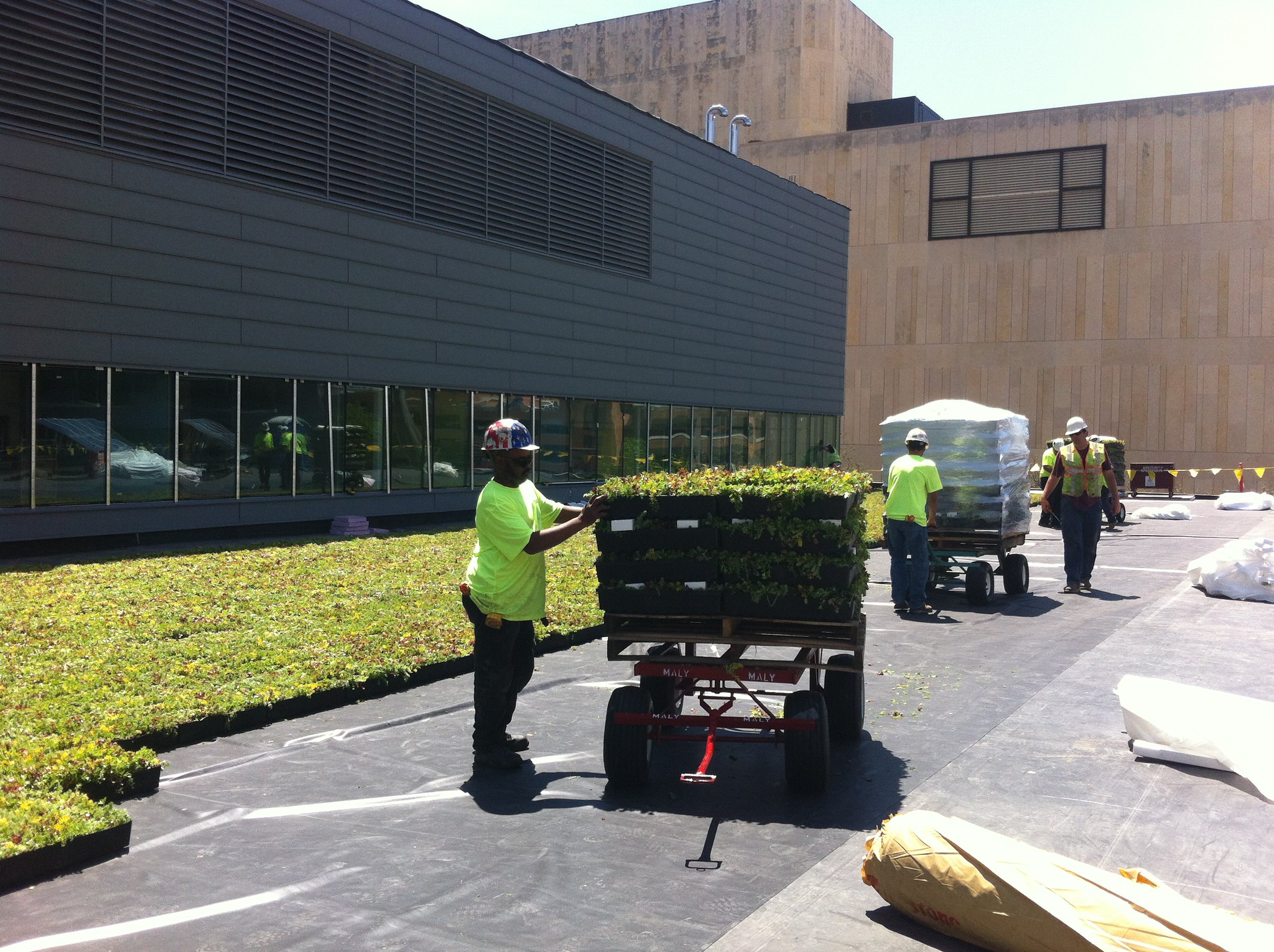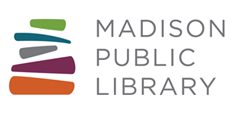
Madison Public Library’s commitment to the community goes beyond offering programs, resources, and books. Over the past several years, the Library has made strides to improve efficiency and make environmentally-conscious decisions during construction, remodeling, and ongoing operations of its facilities.
In 2006, Library facilities staff joined a team of other City facility managers and maintenance staff to develop the Green Cleaning Administrative Procedure Memorandum [APM], a policy that guides city departments in reducing the impact of chemicals introduced into our local environment. The APM calls for the use of Green Seal cleaning products unless a cleaning process absolutely requires a chemical that does not have a Green Seal equivalent. City agencies and contracted vendors are now required to adhere to this APM. The Library exceeds requirements in the APM by making sure all vacuum cleaners use HEPA-grade filters to protect the health of our facility maintenance workers.
The Library has made a point to incorporate reusable energy into its daily operations, as well. Both Central Library and Alicia Ashman Library have solar panel installations that reduce the amount of electricity drawn from the grid. This both reduces our carbon footprint as well as our electrical costs, allowing the operating budget to fund other expenses. The solar panels on the Central Library alone generate enough energy to power four average homes. The rooftop solar array at our new Library Service and Support Center is the largest in our system, generating enough electricity to completely remove the facility from the grid during mostly sunny days.
The Support Center also features a geothermal heating and cooling system. Water circulating hundreds of feet into the ground where temperatures are a stable mid-50 degree range helps to reduce the amount of energy required to heat and cool the building. In the winter, it takes less time to heat water coming from the City water system. In the summer, it takes less energy to cool the water. Our new Pinney Library also takes advantage of a geothermal system, eliminating the need for natural gas and a traditional HVAC system. In fact, the new Pinney Library does not even have a gas meter attached to the space.
“The new Pinney Library presents an excellent opportunity to model stewardship of the environment with the installation of a geothermal system that reflects our concerns about the impact of fossil fuels on climate change with the elimination of natural gas,” Library Director Greg Mickells explains. “Additional fiscal stewardship is achieved with the cost savings that will be realized with the efficiencies of the geothermal system. It is a win-win for the environment and the Library.”

Solar panels at Central Library (left) and Alicia Ashman (middle); Green roof plants at Central Library (right)
Pinney Library also has reclaimed wood on the interiors, an LED lighting system and energy-efficient windows. You can learn more about Pinney's sustainability efforts here.
Another environmentally-friendly feature of our libraries is the Madison Gas & Electric Company Green Roof at Central Library. Green roofs are environmentally beneficial for a number of reasons. When it rains, the plants absorb much of the stormwater, keeping about 15,000 square feet of water from reaching our nearby lakes and rivers. This helps minimize the amount of greywater that would otherwise enter our water systems and reduces the effects of flooding. Green roofs also help reduce the “island effect” that occurs in high-rise urban structures during hot weather. The black rubber and tar that is left exposed on many buildings raises temperatures for both the building and surrounding areas. Not only does the green roof prevent the typical temperature rise but is also a welcome space for those who visit the Library during their usual workday, or as part of their trip to Madison.

The Library has much to consider before switching to more environmentally-conscious practices. There can be unintended consequences to making changes like these. Library facilities and maintenance staff analyze every aspect of a project to make sure they mitigate those consequences. Madison Public Library’s view of sustainability goes beyond environmental impact, considering the ways in which changes affect its staff and the general public.
“I like to think that the term ‘sustainable’ applies to people’s well-being as well as to its environmental definition,” Library Facilities Manager Mark Benno explains. “The opening of the Library Service and Support Center made our entire Library operation more sustainable. It opened up space at our libraries, provides our Friends operations with warehouse space outside of our libraries, and gives staff a place for meetings and conferences, freeing up meeting rooms in our respective libraries.”
So what does the future hold? The Library will continue to further its commitment to its community and the environment. The Imagination Center at Reindahl Park offers new opportunities to further our sustainability practices. Since this will be a library within a park, the land will not require remediation. Our Goodman South Madison, Sequoya, Central and, most recently, Pinney libraries already achieved Gold and Silver LEED ratings. But the Imagination Center might be our first LEED Platinum facility - the highest sustainability rating a building can receive. With the number of visitors anticipated, the hope is this facility will inspire every visitor to contemplate their own sustainability goals.
Another Library practice currently being examined is a way to get all discarded books recycled. “If we don’t exhibit a dedication to sustainable practices, then we can’t expect the public to either,” Benno says.

Construction of Central Library's green roof in 2013
While much of the funding for sustainability projects is included in local taxes, private contributions to Madison Public Library Foundation helped support several initiatives. The City of Madison has also been an enormous resource in ensuring Madison Public Library has the support needed to move forward with many of these efforts. City Engineering is a key partner in our solar, geo-thermal, LED, and other building-related initiatives. Their sustainable building fund, for example, is funding a more efficient boiler at Sequoya that would not have been affordable otherwise.
As we move forward into 2021, we're in the midst of upgrading our lighting in multiple library locations to LED lights. While some of the newer facilities were built with LED lights, this initiative will allow a complete lighting upgrade for six of the neighborhood libraries. Hawthorne Library will be the first facility to receive the new lights, and that installation will happen in May/June followed by Alicia Ashman, Lakeview and Meadowridge Libraries later this year. Sequoya and Goodman South Madison's installs will take place in early 2022. The scope of each installation will include all areas of the library - main area, staff spaces and even storage. City Engineering has helped on the design and bidding of the project, and the Library's maintenance team did an install of LED lights at Monroe Street Library on their own given the small size of that space. The plan is for Central Library to receive an LED lighting upgrade, as well, in the next couple of years.
Those looking to support Madison Public Library’s efforts to reduce its impact on the environment can adopt some of their own sustainability practices as their own by considering residential applications for solar panels and geothermal systems - or even just making small changes to reduce their own carbon footprint.


